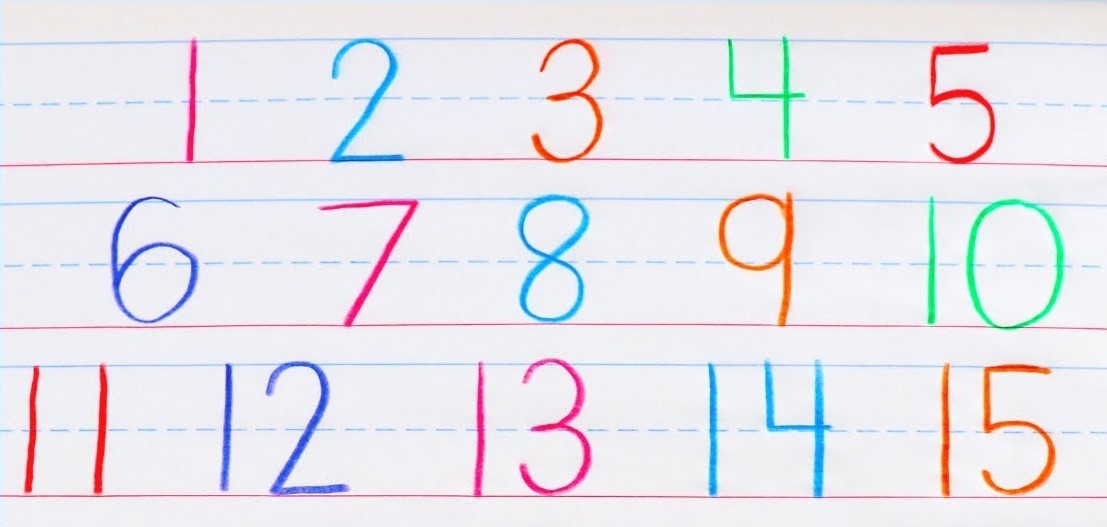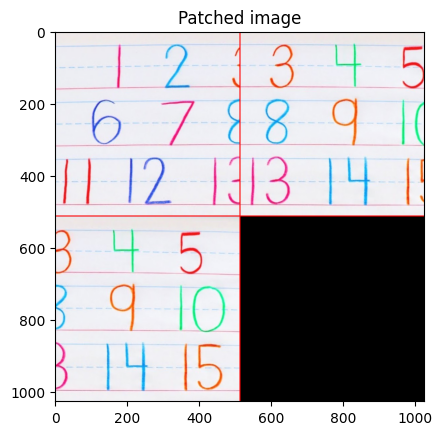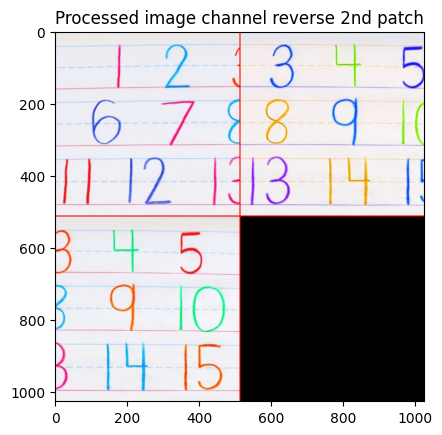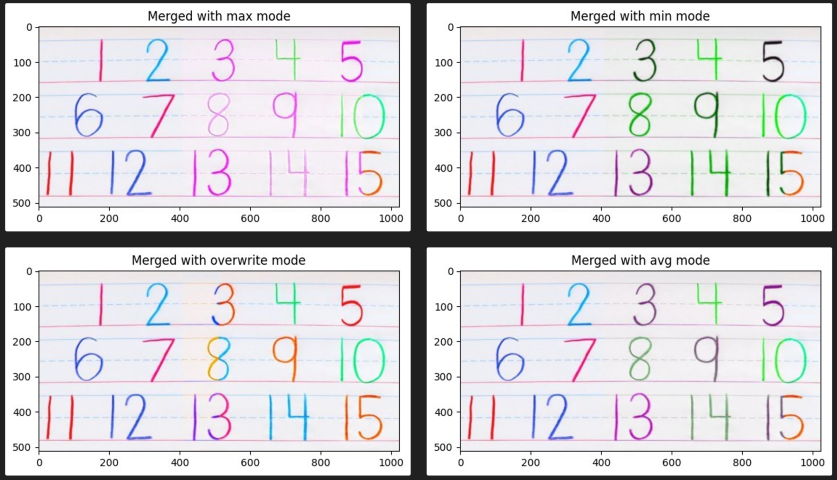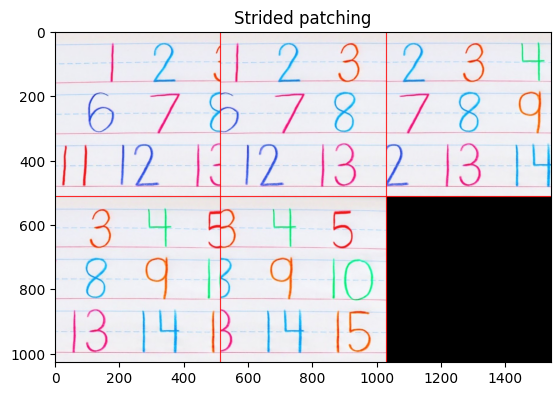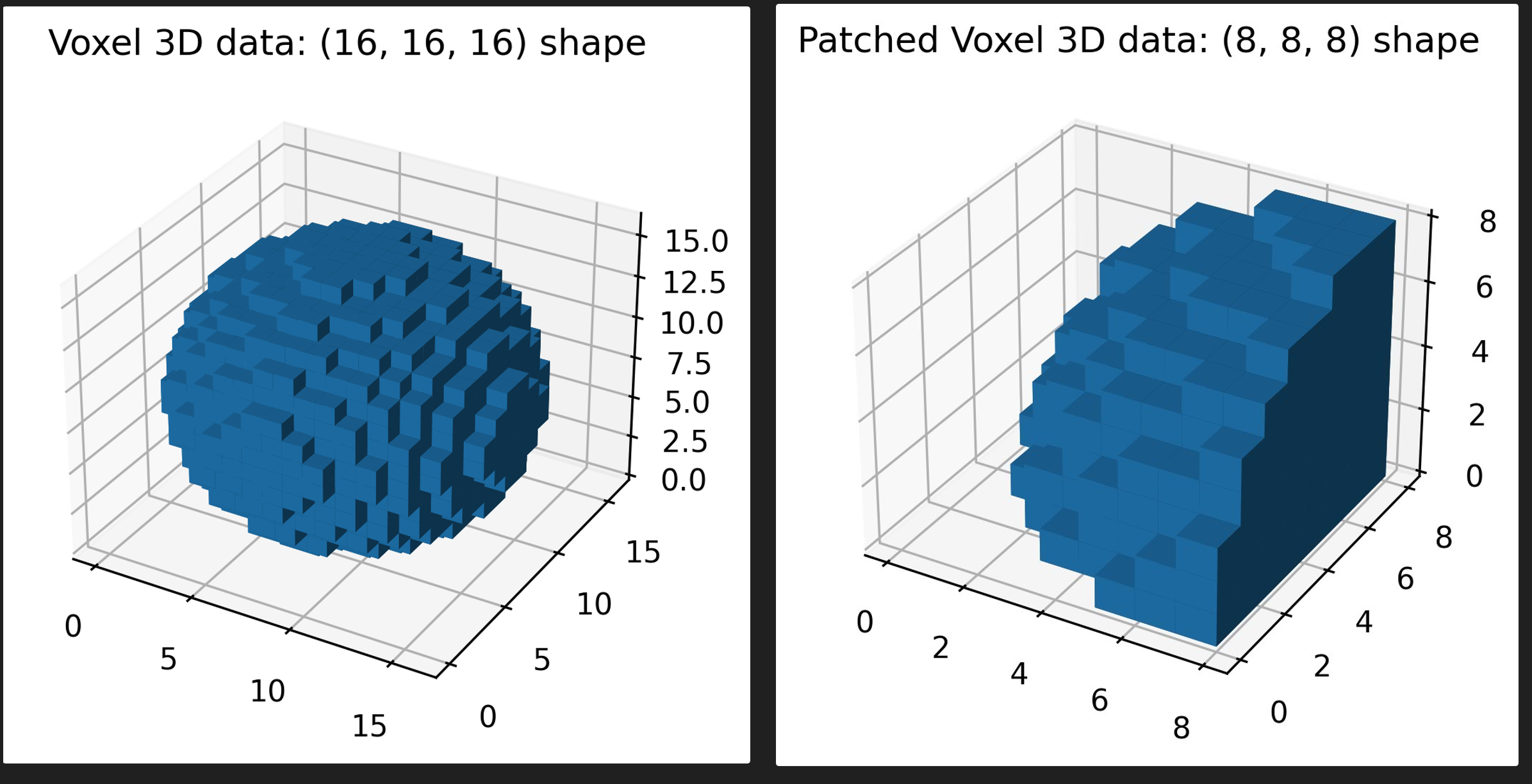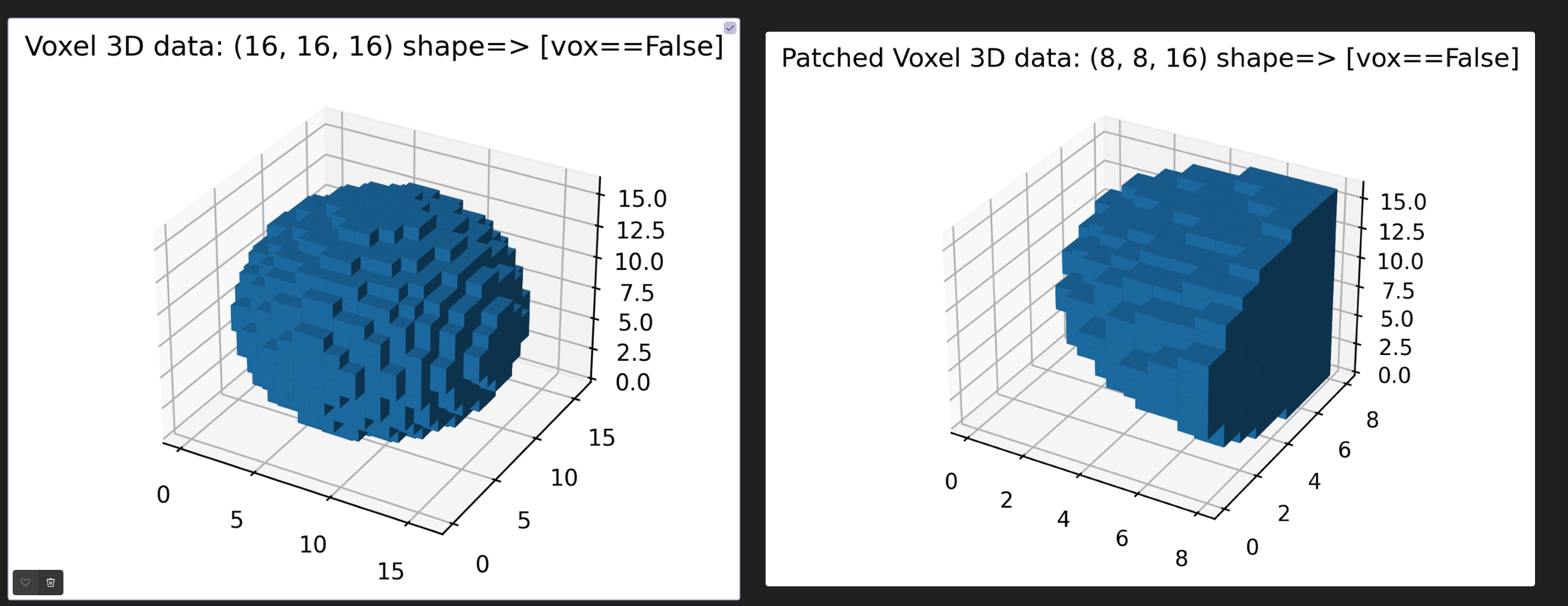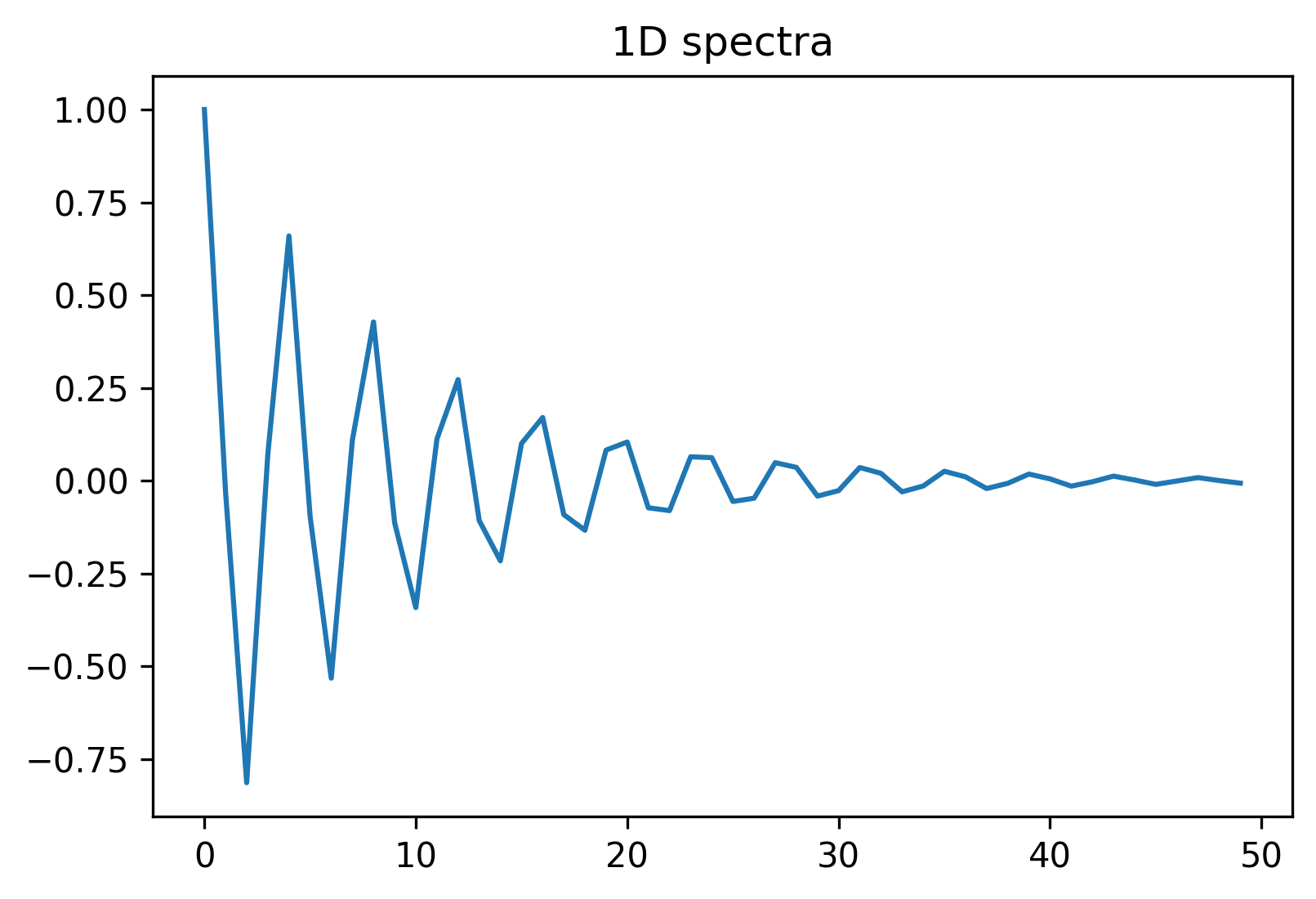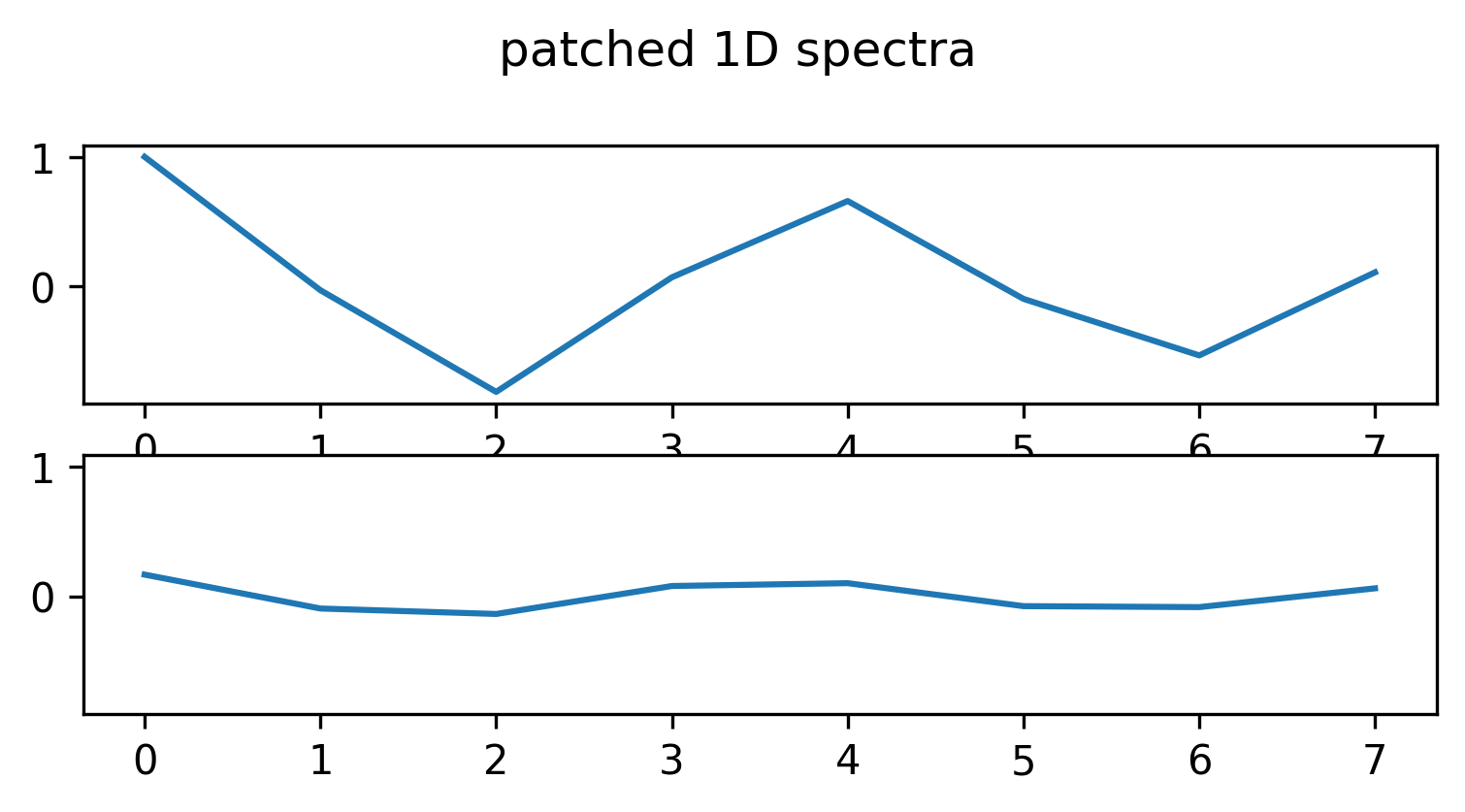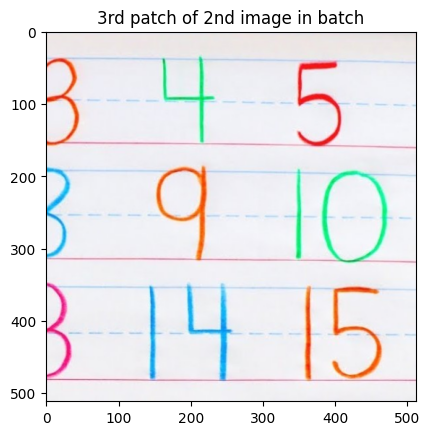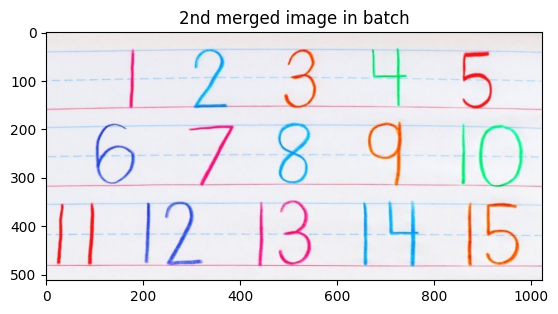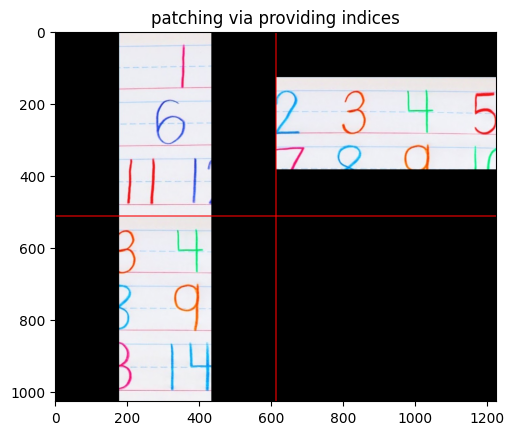Extract and Merge Batches/Image patches (tf/torch) for easy, fast and self-contained digital image processing and deep learning model training.
Project description
Extract and Merge Image Patches (EMPatches)
Extract and Merge Batches/Image patches (tf/torch), fast and self-contained digital image processing and deep learning model training.
- Extract patches
- Merge the extracted patches to obtain the original image back.
Upadate 0.2.3 (Bug Fix)
- While merging tensors.
thanks MRLBradley for noticing.
Upadate 0.2.2 (New Functionalities)
- Handling 1D spectral and 3D volumetric data structures, thanks to antonyvam.
- Batch processing support for 1D, 2D, 3D (image/pixel + voxel/volumetric) data added.
- Bug fixes for multi-dimensional image patch merging for
C > 3.
Update 0.2.0
- Handling of
tensorflow/pytorchBatched images of shapeBxCxHxW->pytorchorBxHxWxC->tf. C can be any number not limited to just RGB channels. - Modes added for mergeing patches.
overwrite: next patch will overwrite the overlapping area of the previous patch.max: maximum value of overlapping area at each pixel will be written.min: minimum value of overlapping area at each pixel will be written.avg: mean/average value of overlapping area at each pixel will be written.
- Patching via providing Indices.
- Strided patching thanks to Andreasgejlm
Dependencies
python >= 3.6
numpy
math
Usage
- Extracting Patches
- Merging Patches
- Voxel/Volumetric Data patching
- 1D spectral Data patching
- Strided Patching
- Batched Patching
- Patching via Providing Indices
Extracting Patches
from empatches import EMPatches
import imgviz # just for plotting
# get image either RGB or Grayscale
img = cv2.imread('../digits.jpg')
img = cv2.cvtColor(img, cv2.COLOR_BGR2RGB)
# load module
emp = EMPatches()
img_patches, indices = emp.extract_patches(img, patchsize=512, overlap=0.2)
# displaying 1st 10 image patches
tiled= imgviz.tile(list(map(np.uint8, img_patches)),border=(255,0,0))
plt.figure()
plt.imshow(tiled)
Image Processing
Now we can perform our operation on each patch independently and after we are done we can merge them back together.
'''
pseudo code
'''
# do some processing, just store the patches in the list in same order
img_patches_processed = some_processing_func(img_patches)
# or run your deep learning model on patches independently and then merge the predictions
img_patches_processed = model.predict(img_patches)
'''For now lets just flip channels'''
img_patches[1] = cv2.cvtColor(img_patches[1], cv2.COLOR_BGR2RGB)
Merging-Patches
After processing the patches if you can merge all of them back in original form as follows,
merged_img = emp.merge_patches(img_patches, indices, mode='max') # or
merged_img = emp.merge_patches(img_patches, indices, mode='min') # or
merged_img = emp.merge_patches(img_patches, indices, mode='overwrite') # or
merged_img = emp.merge_patches(img_patches, indices, mode='avg') # or
# display
plt.figure()
plt.imshow(merged_img.astype(np.uint8))
plt.title(Your mode)
Strided Patching
img_patches, indices = emp.extract_patches(img, patchsize=512, overlap=0.2, stride=128)
tiled= imgviz.tile(list(map(np.uint8, img_patches)),border=(255,0,0))
plt.figure()
plt.imshow(tiled.astype(np.uint8))
plt.title('Strided patching')
Volumetric/Voxel data patching
# first generate a sample data
def midpoints(x):
sl = ()
for i in range(x.ndim):
x = (x[sl + np.index_exp[:-1]] + x[sl + np.index_exp[1:]]) / 2.0
sl += np.index_exp[:]
return x
r, g, b = np.indices((17, 17, 17)) / 16.0
rc = midpoints(r)
gc = midpoints(g)
bc = midpoints(b)
# define a sphere about [0.5, 0.5, 0.5]
sphere = ((rc - 0.5)**2 + (gc - 0.5)**2 + (bc - 0.5)**2 < 0.5**2).astype(int)
ax = plt.figure().add_subplot(projection='3d')
ax.voxels(sphere)
plt.title(f'Voxel 3D data: {sphere.shape} shape')
Extract patches from voxel 3D data.
emp = EMPatches()
patches, indices = emp.extract_patches(sphere, patchsize=8, overlap=0.0, stride=None, vox=True)
ax = plt.figure().add_subplot(projection='3d')
ax.voxels(patches[1])
plt.title(f'Patched Voxel 3D data: {patches[0].shape} shape')
for i in range(len(patches)):
print(patches[i].shape)
mp = emp.merge_patches(patches, indices)
###############___VOXEL DATA___ setting vox to True ########################
## shape indices in xyz dimension
>> (8, 8, 8) (0, 8, 0, 8, 0, 8)
>> (8, 8, 8) (0, 8, 0, 8, 8, 16)
>> (8, 8, 8) (8, 16, 0, 8, 0, 8)
>> (8, 8, 8) (8, 16, 0, 8, 8, 16)
>> (8, 8, 8) (0, 8, 8, 16, 0, 8)
>> (8, 8, 8) (0, 8, 8, 16, 8, 16)
>> (8, 8, 8) (8, 16, 8, 16, 0, 8)
>> (8, 8, 8) (8, 16, 8, 16, 8, 16)
⚠️NOTE⚠️
Here the output shape is 8x8x8 i.e. the croping is also done in D/C dimension unlike when we are doing image croping/patching in that case the output would have shape 8x8x3 (RGB) or 8x8 (grayscale), and incides would be like.
###############___PIXEL DATA___ -> setting vox to False ########################
## shape indices in xy dimension
>> (8, 8, 16) (0, 8, 0, 8)
>> (8, 8, 16) (8, 16, 0, 8)
>> (8, 8, 16) (0, 8, 8, 16)
>> (8, 8, 16) (8, 16, 8, 16)
1D spectral Data patching
x1 = np.linspace(0.0, 5.0)
y1 = np.cos(5 * np.pi * x1) * np.exp(-x1)
plt.plot(y1)
plt.title('1D spectra')
emp = EMPatches()
patches, indices = emp.extract_patches(y1, patchsize=8, overlap=0.0, stride=None)
ax1 = plt.subplot(1)
plt.plot(patches[0]) # 0th patch
ax2 = plt.subplot(2, sharex=ax1, sharey=ax1)
plt.plot(patches[2]) # 2nd pathc
plt.suptitle('patched 1D spectra')
# merge again
mp = emp.merge_patches(patches, indices)
Batched Patching
Things to know.
-
batch : Batch of images of shape either BxCxHxW -> pytorch or BxHxWxC -> tf to extract patches from in list(list1, list2, ...), where, list1->([H W C], [H W C], ...) and so on.
-
patchsize : size of patch to extract from image only square patches can be extracted for now.
-
overlap (Optional): overlap between patched in percentage a float between [0, 1].
-
stride (Optional): Step size between patches
-
type (Optional): Type of batched images tf or torch type
-
batch_patches : a list containing lists of extracted patches of images.
-
batch_indices : a list containing lists of indices of patches in order, whihc can be used at later stage for 'merging_patches'.
-
merged_batch : a np array of shape BxCxHxW -> pytorch or BxHxWxC -> tf.
Extraction
from empatches import BatchPatching
bp = BatchPatching(patchsize=512, overlap=0.2, stride=None, typ='torch')
# extracging
batch_patches, batch_indices = bp.patch_batch(batch) # batch of shape BxCxHxW, C can be any number 3 or greater
plt.imshow(batch_patches[1][2])
plt.title('3rd patch of 2nd image in batch')
Merging
# merging
# output will be of shpae depending on typ variable
# BxCxHxW -> torch or BxHxWxC -> tf
merged_batch = bp.merge_batch(batch_patches, batch_indices, mode='avg')
# accessing the merged images
plt.imshow(merged_batch[1,...].astype(np.uint8))
plt.title('2nd merged image in batch')
Patching via Providing Indices
NOTE in this case merging is not supported.
from empatches import patch_via_indices
img = cv2.imread('./digit.jpg')
img = cv2.cvtColor(img, cv2.COLOR_BGR2RGB)
img = cv2.resize(img, (1024, 512))
i = [(0, 512, 0, 256), # 1st patch dims/indices
(0, 256, 310, 922),# 2nd patch dims/indices
(0, 512, 512, 768)]# 3rd patch dims/indices
img_patches = patch_via_indices(img, indices)
# plotting
tiled= imgviz.tile(list(map(np.uint8, img_patches)),border=(255,0,0))
plt.figure()
plt.imshow(tiled.astype(np.uint8))
plt.title('patching via providing indices')
For more infomration visit Homepage.
Project details
Download files
Download the file for your platform. If you're not sure which to choose, learn more about installing packages.
Source Distribution
File details
Details for the file empatches-0.2.3.tar.gz.
File metadata
- Download URL: empatches-0.2.3.tar.gz
- Upload date:
- Size: 11.2 kB
- Tags: Source
- Uploaded using Trusted Publishing? No
- Uploaded via: twine/4.0.2 CPython/3.9.13
File hashes
| Algorithm | Hash digest | |
|---|---|---|
| SHA256 |
7279224d85225eb9658f8f9c747c7ae1cb807e17814acda24926a394af30ee6e
|
|
| MD5 |
24c51432f8ba117177d65fb9317a93e2
|
|
| BLAKE2b-256 |
b70aca6a71668fdcd4f8908cb76052b56ce09a47eb13ade9f2baf519f1af9bfd
|






